The Evaluation and Application of SmartGel for Deepwater Loss-Circulation Control
Abstract
:1. Introduction
2. SmartGel Loss-Circulation Technology
2.1. Performance Characteristics of SmartGel
2.2. Gelling Property of SmartGel
2.3. Relative Strength of SmartGel
- (1)
- Experimental materials and devices
- (2)
- Experimental procedure
- (3)
- Experimental result
- (4)
- Experimental data analysis
| Dosage of SmartGel | Squeeze Gel Strength of SmartGel, MPa | |||
|---|---|---|---|---|
| 50 °C | 60 °C | 70 °C | 80 °C | |
| 4% | 0.90 | 0.80 | 0.67 | 0.54 |
| 5% | 1.10 | 1.00 | 0.82 | 0.67 |
| 6% | 1.40 | 1.30 | 1.10 | 0.88 |
| 7% | 1.50 | 1.42 | 1.28 | 1.04 |
2.4. Evaluation of Plugging Performance of SmartGel
2.4.1. Sand Layer Experiment Set Up
2.4.2. Permeable Plugging Tester (PPT) Sand Disc Experiment
2.4.3. Experiment Results of Simulated Porosity by Core Flow Meter
2.5. Evaluation of Gel-Breaking Performance of SmartGel
2.5.1. Gel-Breaking Performance of SmartGel at Low Temperature
2.5.2. Gel-Breaking Performance of SmartGel at High Temperature
3. Application of SmartGel Loss-Circulation Material in Exploration Well A
3.1. Basic Conditions
3.2. Loss-Circulation
3.3. Analysis of Causes of Loss-Circulation
3.4. Plugging and Gel-Breaking Effect
- (1)
- Formula for plugging drilling fluid: fresh water + SmartGel + 0.2% GelRetarder;
- (2)
- Close the choke valve, open the upper annulus blowout preventer, gradually increase the pump rate to 2850 L/min for circulation with 228 L/min as an increment, and observe the wellbore stability for loss-circulation;
- (3)
- Formation pressure test: 1.13 m3 of accumulated drilling fluid is pumped, the pump pressure is 0.13 MPa~0.41 MPa, the pump pressure drops to 0.13 MPa after stopping the pump, and the pressure is released and flow back 0.5 m3;
- (4)
- Plugging is successful and normal circulation is established;
- (5)
- When drilling reaches target depth, the measured circulating temperature at the bottom is 73 °C, and the static temperature is 78 °C. At the end of drilling, the drilling fluid with a dosage of 5% PF-JPC is added for circulating gel-breaking, and then the rotary sidewall coring tool is run to perform sidewall coring. From the results of coring, there is no gel on the surface, which proves that the gel-breaking effect is good.
4. Conclusions
- (1)
- There are many interbedded layers between mudstone and sandstone in the second member of the Yinggehai Formation in the Lingshui block, and there is an interface fracture zone between mudstone and sandstone; many layers of loss-circulation are formed, which is prone to cause loss-circulation.
- (2)
- SmartGel has a high viscosity and good plugging effect, which can effectively plug loss formation. Based on the degradability of guar gel, after gel-breaking treatment is adopted at 80 °C, the viscosity of SmartGel gel can be completely eased within 48 h, and its viscosity is similar to water, with a good gel-breaking effect, which can effectively protect the reservoir.
- (3)
- The gel process could be controlled by adjusting the dosage and temperature of gel accelerators. In order to adjust the gelling speed of SmartGel, GelRetarder and GelAccelerant were developed.
- (4)
- The extrusion strength of SmartGel increases with the increase in SmartGel dose and decreases with the increase in temperature.
- (5)
- As for the plugging performance of SmartGel, the sand bed test confirms that the pressure capacity of SmartGel in the 80 °C sand bed can reach at least 7 MPa, which can meet the requirements of site construction. The PPT sand tray test and core flow meter simulation pore test show that SmartGel has good bearing performance.
- (6)
- As for the gel-breaking of SmartGel, low-temperature gel-breaking is achieved by adding the biological gel-breaking agent S100. The gel-breaking time is shortened with the increasing dose of S100, and the higher the temperature is, the more obvious the effect is. During high-temperature gel-breaking, the enzyme gel-breaking agent does not play a role above 60 °C; therefore, the post-gel-breaking method is adopted. The test shows that after adding 5% gel-breaking agent PF-JPC, causing gel-breaking at 80 °C, the SmartGel gel completely reduces the viscosity within 48 h.
- (7)
- After successful plugging, drilling was successfully completed with a drilling fluid density of 1.21 g/cm3, and no loss-circulation occurred afterwards. According to the core results obtained after gel-breaking, there was no gel residual on the core surface, indicating that the SmartGel loss-circulation agent has a good application effect and can improve deepwater drilling to a certain extent.
Author Contributions
Funding
Institutional Review Board Statement
Informed Consent Statement
Data Availability Statement
Conflicts of Interest
References
- Loeppke, G.E.; Glowka, D.A.; Wright, E.K. Design and evaluation of loss–circulation materials for severe environments. J. Pet. Technol. 1990, 42, 328–337. [Google Scholar] [CrossRef]
- Fidan, E.; Babadagli, T.; Kuru, E. Use of Cement as Loss -Circulation Material—Field Case Studies. In Proceedings of the IADC/SPE 88005 Asia Pacific Drilling Technology Conference and Exhibition, Kuala Lumpur, Malaysia, 13–15 September 2004. [Google Scholar]
- Sweatman, R.; Wang, H.; Xenakis, H. Wellbore Stabilization Increases Fracture Gradients and Controls Losses/Flows during Drilling. In Proceedings of the Abu Dhabi International Conference and Exhibition, Abu Dhabi, United Arab Emirates, 10–13 October 2004. [Google Scholar]
- Bruton, J.R.; Ivan, C.D.; Heinz, T.J. Loss-Circulation Control: Evolving Techniques and Strategies to Reduce Downhole Mud Losses. In Proceedings of the Drilling Conference (SPE/IADC 67735), Amsterdam, The Netherlands, 27 February–1 March 2001. [Google Scholar]
- Horton, R.L.; Prasek, B.; Growcock, F.B.; Vian, J.W.; Ivan, C.D. Prevention and Treatment of Loss-circulation with Crosslinked Polymer Material. U.S. Patent 7098172 B1, 29 August 2006. [Google Scholar]
- Zhang, Q.; Xu, X.; Dong, W.; Fu, J. Study and application of granular postponed swelling LCM. Drill. Fluid Complet. Fluid 2006, 23, 2124. [Google Scholar]
- Liu, Y.; Xu, T.; Yang, Z.; Gong, Z. New development of leak prevention and plugging technology at home and abroad. Drill. Fluid Complet. Fluid 2010, 27, 80–84. [Google Scholar]
- Nie, T.; Guo, J.; Liu, F. Research on drilling fluid plugging materials and leak prevention plugging technology. Chem. Eng. Des. Commun. 2020, 46, 197–198. [Google Scholar]
- Li, W.; Zhang, W.Z.; Deng, D.D.; Li, H.M.; Wang, T.; Wang, B. Experimental study on the feasibility of PLC polymer crosslinked gel in loess layer plugging. Explor. Eng. (Rock Soil Drill. Tunn.) 2016, 43, 33–36. [Google Scholar]
- Hu, Z.; Liu, S.; Zhang, J.; Li, D.; Chu, Q. Development of a novel high temperature resistant secondary crosslinked gel plugging material. Prospect. Eng. (Rock Soil Drill. Tunn.) 2016, 43, 103–106. [Google Scholar]
- Liu, H. Development and Evaluation of Anti-High Temperature Reservoir Plugging Gel System. Master’s Thesis, China University of Petrochina, Beijing, China, 2019. [Google Scholar]
- Luo, M. Study on High-Temperature Resistance Controllable Gel Plugging Technology. Master’s Thesis, Yangtze University, Wuhan, China, 2021. [Google Scholar]
- Yu, C. Polymer Gel Plugging Technology Research. Master’s Thesis, China University of Geosciences (Beijing), Beijing, China, 2016. [Google Scholar]
- Wang, Z. Progress in research and application of polymer gel plugging agent. Fine Spec. Chem. 2011, 19, 16–20. [Google Scholar]
- Wang, S.; Pan, J. Development and application of WS-1 gel sealer. Henan Pet. 1998, 30, 23–25. [Google Scholar]
- Wang, H.; Sweatman, R.; Engelman, B.; Deeg, W.; Whitfill, D. The Key to Successfully Applying Today’s Lost-Circulation Solutions. In Proceedings of the SPE Annual Technical Conference and Exhibition (SPE 95895), Dallas, TX, USA, 9–12 October 2005. [Google Scholar]
- Davidson, E.; Richardson, L.; Zoller, S. Control of Lost Circulation in Fractured Limestone Reservoirs. In Proceedings of the IADC/SPE 63734, IADC/SPE Asia Pacific Drilling Technology, Kuala Lumpur, Malaysia, 11–13 September 2000. [Google Scholar]
- Lecolier, E.; Herzhafe, B.; Rousseau, L.; Neau, L.; Quillien, B.; Kieffer, J. Development of a Nanocomposite Gelfor Lost Circulation Treatment. In Proceedings of the Conference Paper (SPE 94686), The Woodlands, TX, USA, 23–25 February 2005. [Google Scholar]
- Chen, Y.; Li, J.; Lu, J.; Ding, M.; Chen, Y. Synthesis and properties of Poly(vinyl alcohol) hydrogels with high strength and toughness. Polym. Test. 2022, 108, 107516. [Google Scholar] [CrossRef]
- Wang, Y.; Zhang, S.; Wang, J. Photo-crosslinkable hydrogel and its biological applications. Chin. Chem. Lett. 2021, 32, 1603–1614. [Google Scholar] [CrossRef]
- Zhang, Y.; Ding, Y.; Li, X.; Zheng, D.; Gao, J.; Yang, Z. Supramolecular hydrogels of self-assembled zwitterionic-peptides. Chin. Chem. Lett. 2021, 32, 3636–3640. [Google Scholar] [CrossRef]
- Zhou, W.; Hu, Z.; Wei, J. Quantum dots-hydrogel composites for biomedical applications. Chin. Chem. Lett. 2022, 33, 1245–1253. [Google Scholar] [CrossRef]
- Sun, N.; Yao, X.; Liu, J.; Li, J.; Yang, N.; Zhao, G.; Dai, C. Breakup and coalescence mechanism of high-stability bubbles reinforced by dispersed particle gel particles in the pore-throat micromodel. Geoenergy Sci. Eng. 2023, 223, 211513. [Google Scholar] [CrossRef]
- Zhang, Y.-L.; Xu, L.-S.; Li, Y.-L. Analysis and discussion on the rheology of SM vegetable gum rilling fluid. Geol. Explor. 2010, 46, 343–347. [Google Scholar]
- Niu, W.-L.; Chen, L.-Y.; Zhu, Z.-P. Application of vegetable-gum in geological hazard investigation drilling. Chin. J. Geol. Hazard Control. 2005, 6, 104–106. [Google Scholar]
- Liu, H.; Xiao, D.-F. A novel low-damage vegetable gum-based fracturing fluid and its application in low-permeability reservoirs. Acta Pet. Sin. 2008, 29, 880–884. [Google Scholar]
- Zhang, Y.-L.; Chen, Y.-M.; Gao, C.-L. Foam drilling fluid column of the static pressure analysis and calculation. Oil Drill. Technol. 2000, 28, 19–21. [Google Scholar]
- Wang, L.-P.; Zhou, S.-L. Drilling Treating Agent and Their Action Principle; Petroleum Industry Press: Beijing, China, 2003; pp. 92–116. [Google Scholar]
- EI-Sayed, M.; Ezz, A.; Aziz, M.; Waheed, S.A. Successes in Curing Massive Loss-Circulation Problems With a New Expansive LCM. In Proceedings of the SPE/IADC Middle East Drilling and Technology Conference (SPE 108290), Cairo, Egypt, 22 October 2007. [Google Scholar]
- Mata, F.; Veiga, M. Crosslinked Cements Solve Loss-Circulation Problem. In Proceedings of the SPE Annual Technical Conference and Exhibition (SPE90496), Houston, TX, USA, 26–29 September 2004. [Google Scholar]
- Song, M.; Wang, W.; Ma, K. Slag M TC Techniques Slove Cementing Problems in Complex Wells. In Proceedings of the International Oil and Gas Conference and Exhibition in China (SPE 64758), Beijing, China, 8–10 June 2010. [Google Scholar]
- Aston, M.S.; Alberty, M.W.; Duncum, S.; Bruton, J.R.; Friedheim, J.E.; Sanders, M.W.A. New Treatment for Wellbore Strengthening in Shale. In Proceedings of the SPE Annual Technical Conference and Exhibition? (SPE 110713), Anaheim, CA, USA, 11–14 November 2007. [Google Scholar]
- Guo, Y.; Zhang, X.; Xu, X. A Novel Non-Crosslinking Loss-Circulation Material. Si Chuan. CN106928948A, 7 July 2017. [Google Scholar]
- Jia, H.; Chen, H. The potential of using Cr3+/Salt tolerant polymer gel for well workover in low temperature reservoir: Laboratory investigation and pilot test. SPE Prod. Oper. 2018, 33, 569–582. [Google Scholar] [CrossRef]
- Ziad, A.B.; Gromakovskii, D.; Al-Sagr, A.; Al-Driweesh, S. First Successful Application of Temporary Gel Plug Replacing Calcium Carbonate Chips to Isolate Depleted Reservoir, Case Study from Saudi Arabia Gas Field. In Proceedings of the SPE International Conference and Exhibition on Formation Damage Control (SPE 178986), Lafayette, LA, USA, 24–26 February 2016. [Google Scholar]
- Sun, F.; Lin, M.; Dong, Z.; Zhang, J.; Wang, C.; Wang, S.; Song, F. Nanosilica-induced high mechanical strength of nanocomposite hydrogel for killing fluids. J. Colloid Interface Sci. 2015, 458, 45–52. [Google Scholar] [CrossRef]
- Vasquez, J.; Santin, Y. Organically Crosslinked Polymer Sealant for Near-Wellbore Applications and Casing Integrity Issues: Successful Wellbore Interventions. In Proceedings of the SPE North Africa Technical Conference and Exhibition, SPE 175687, Cairo, Egypt, 14–16 September 2015. [Google Scholar]
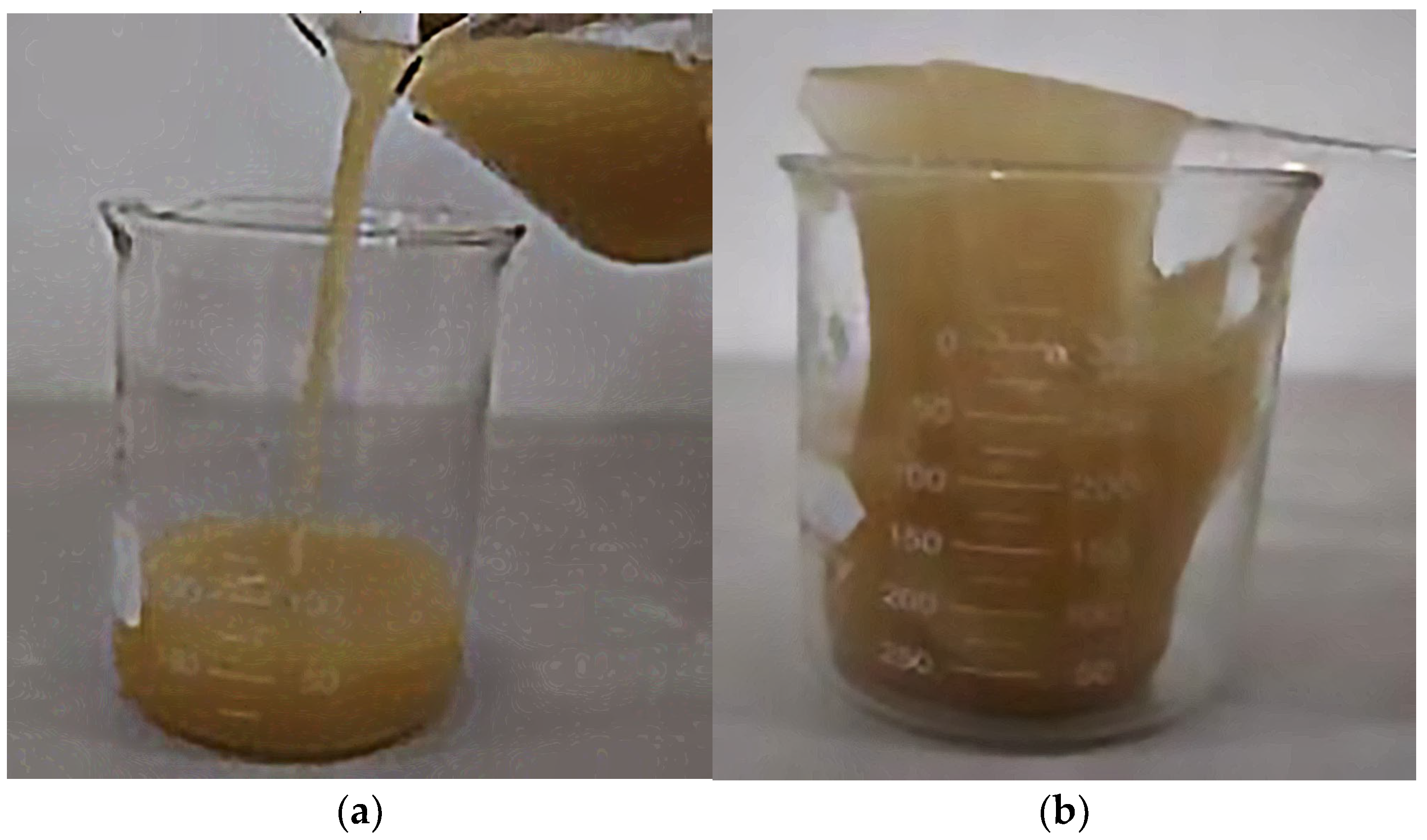
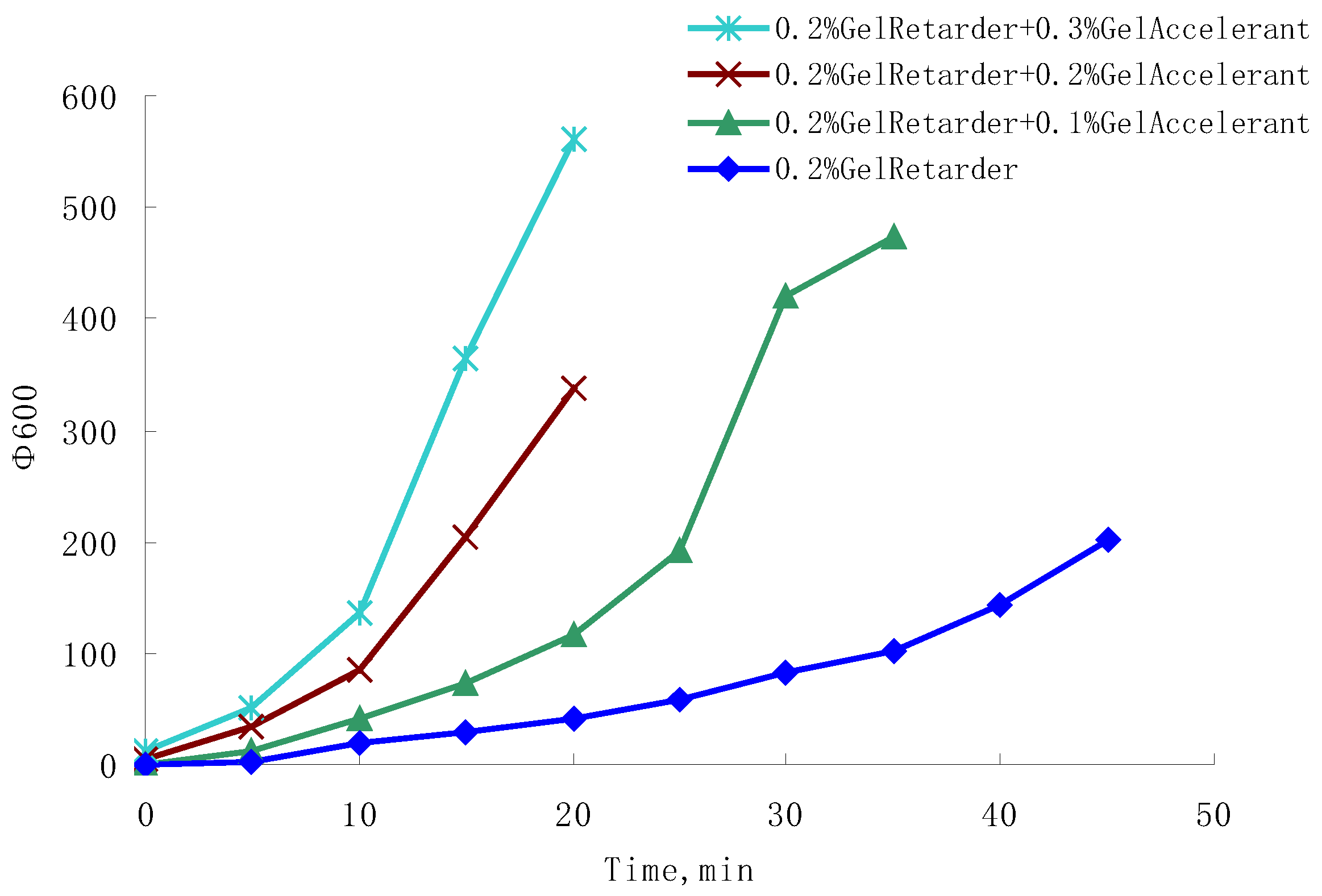
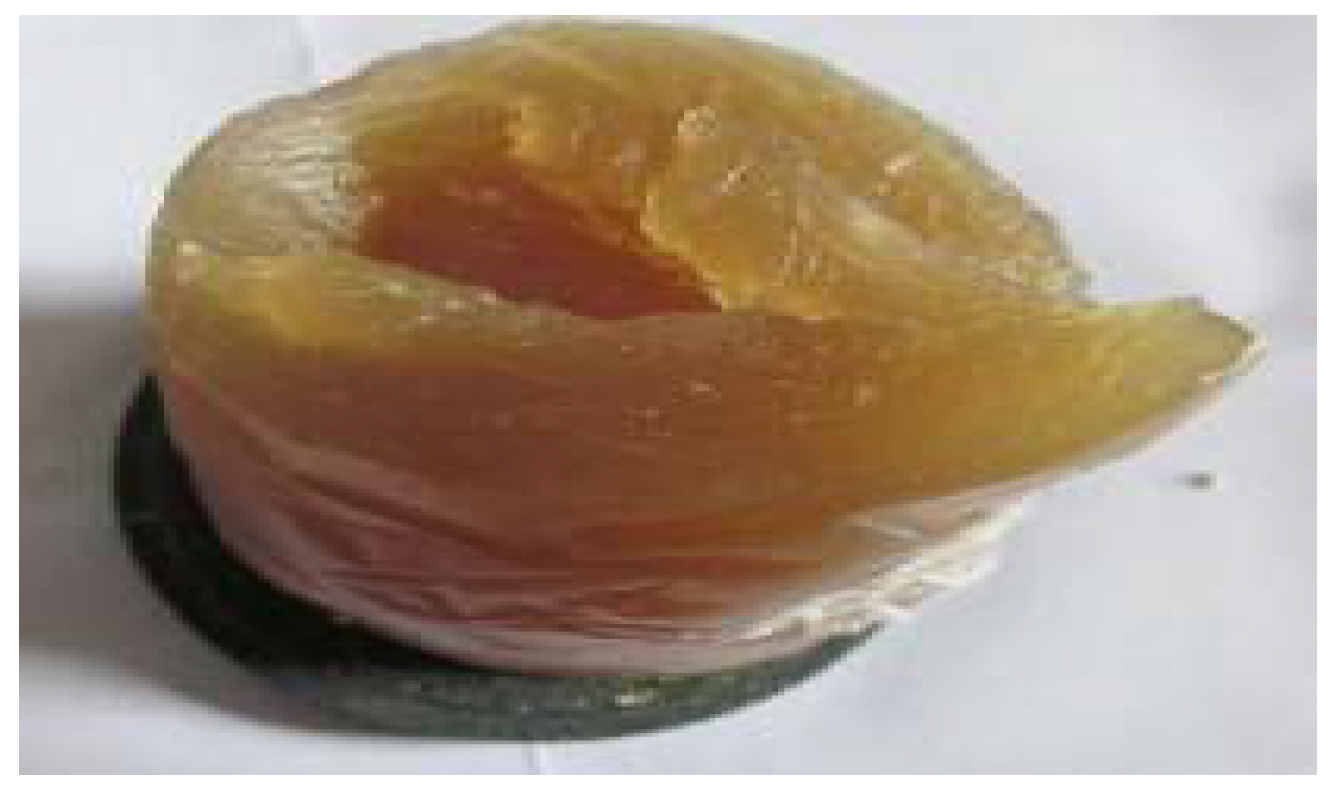
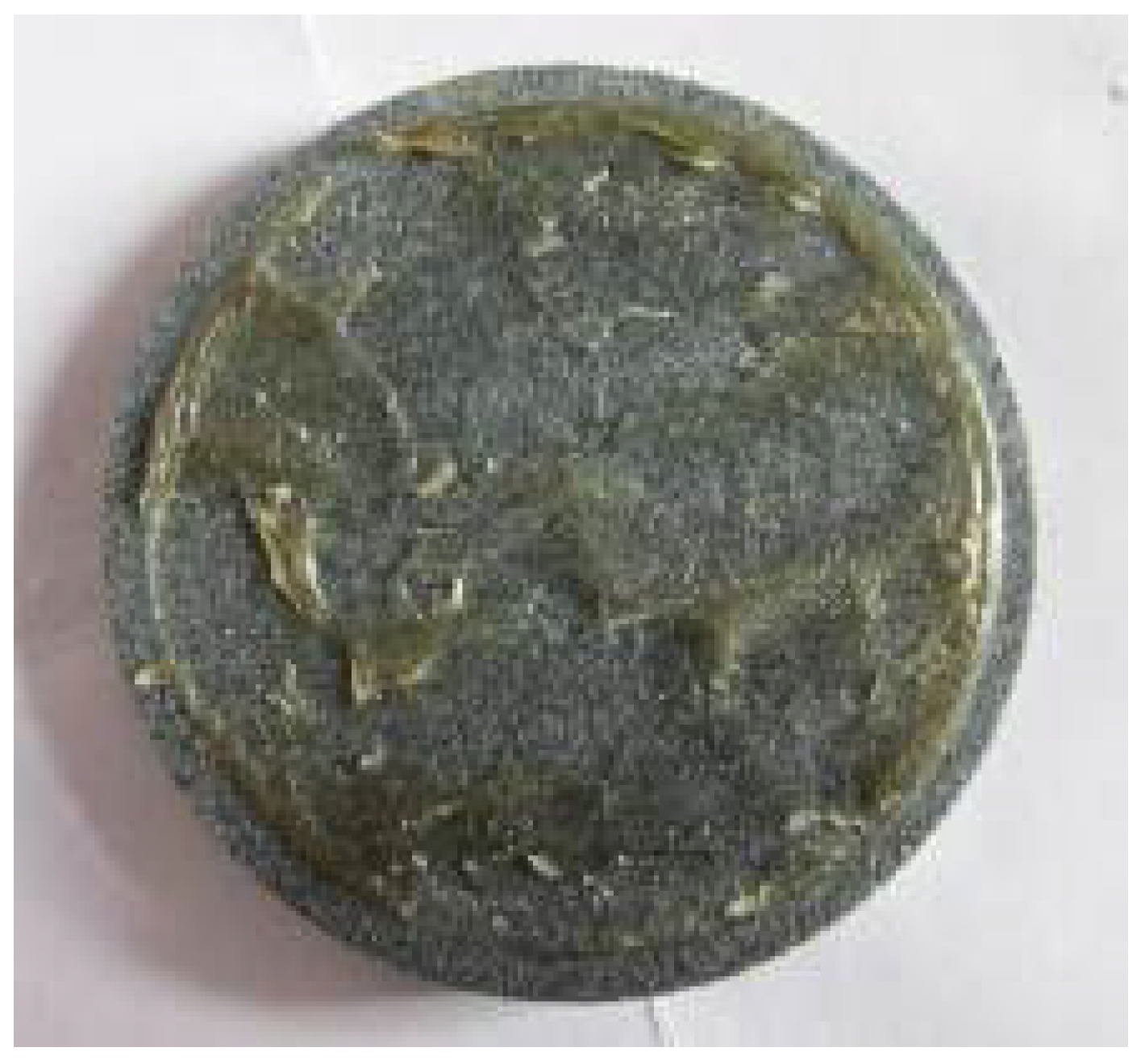

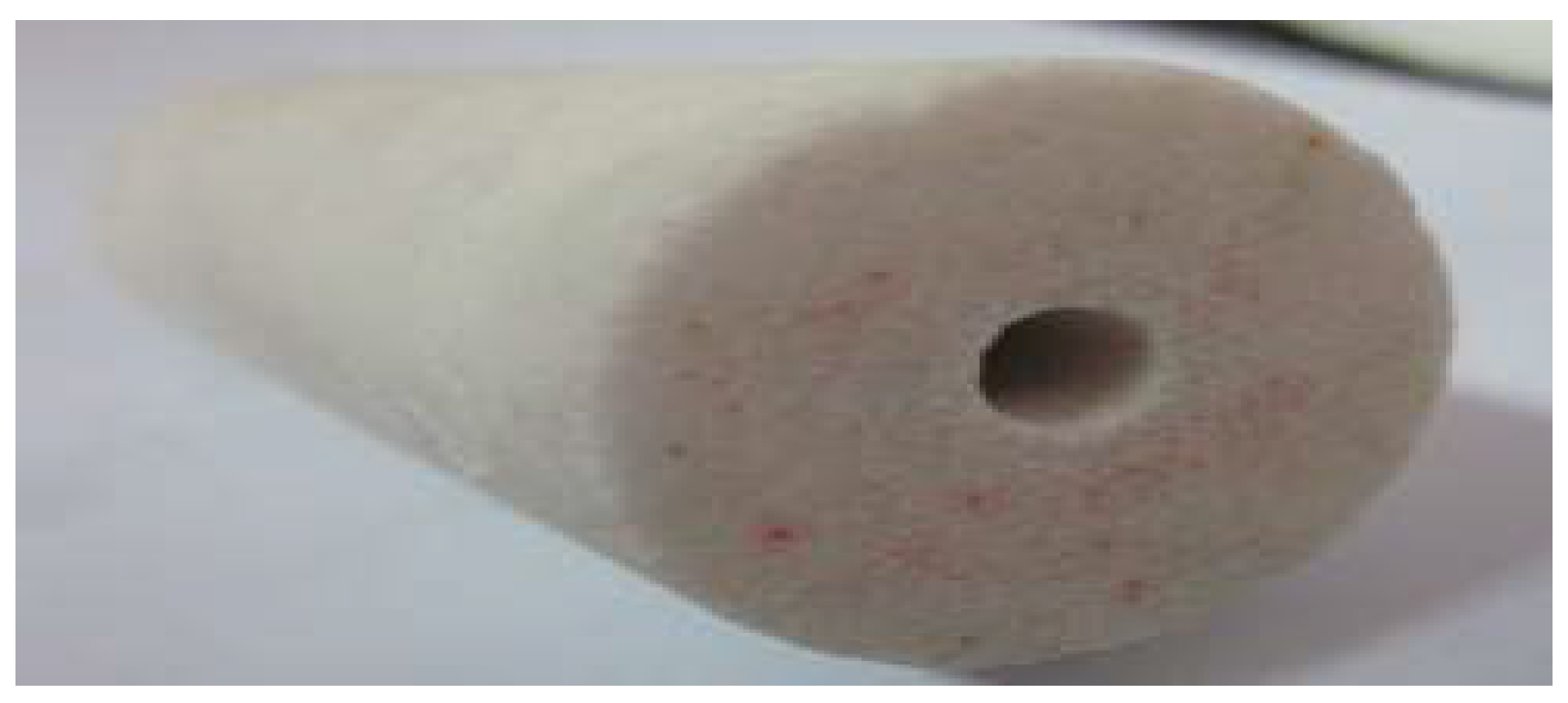

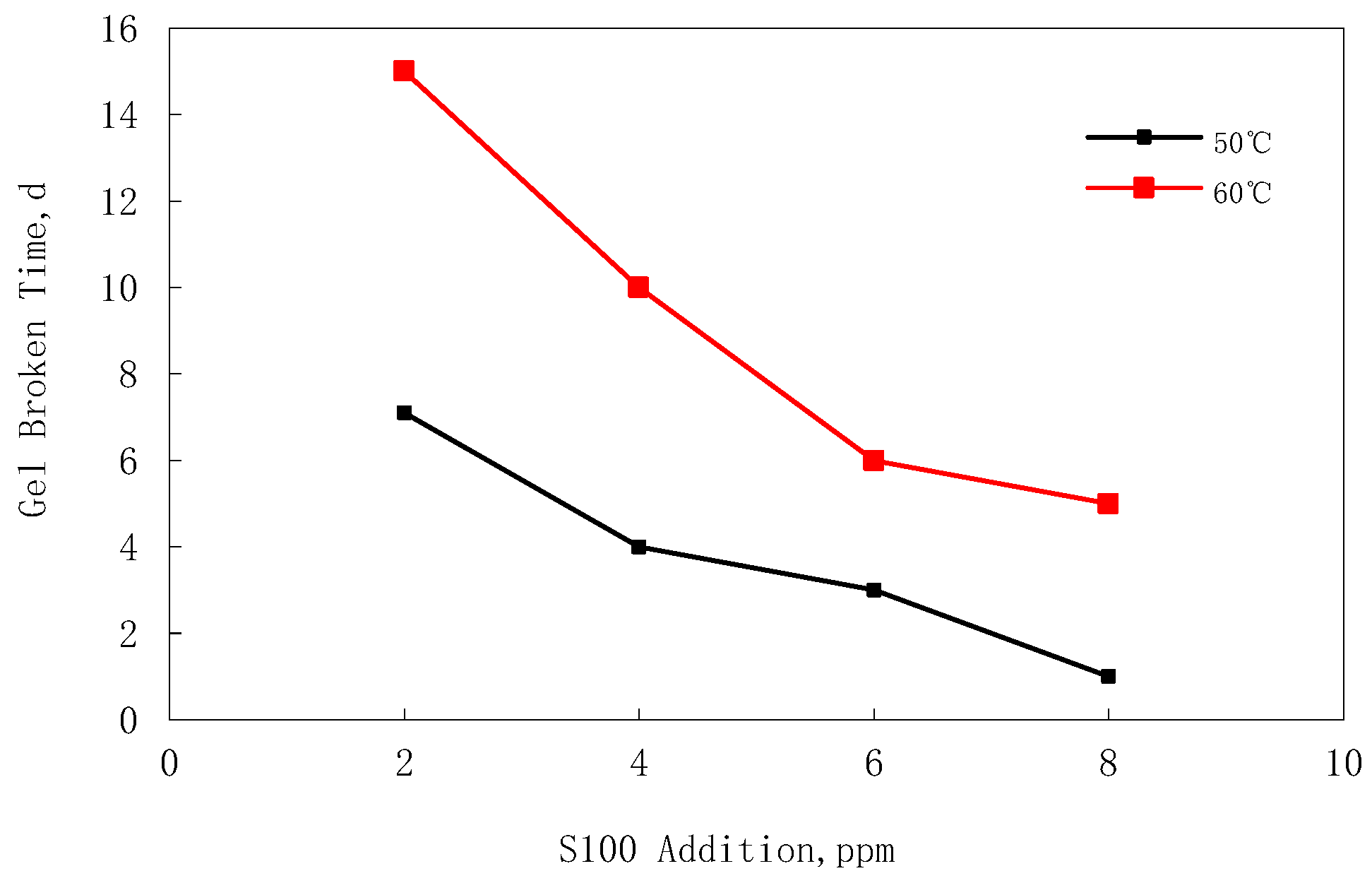
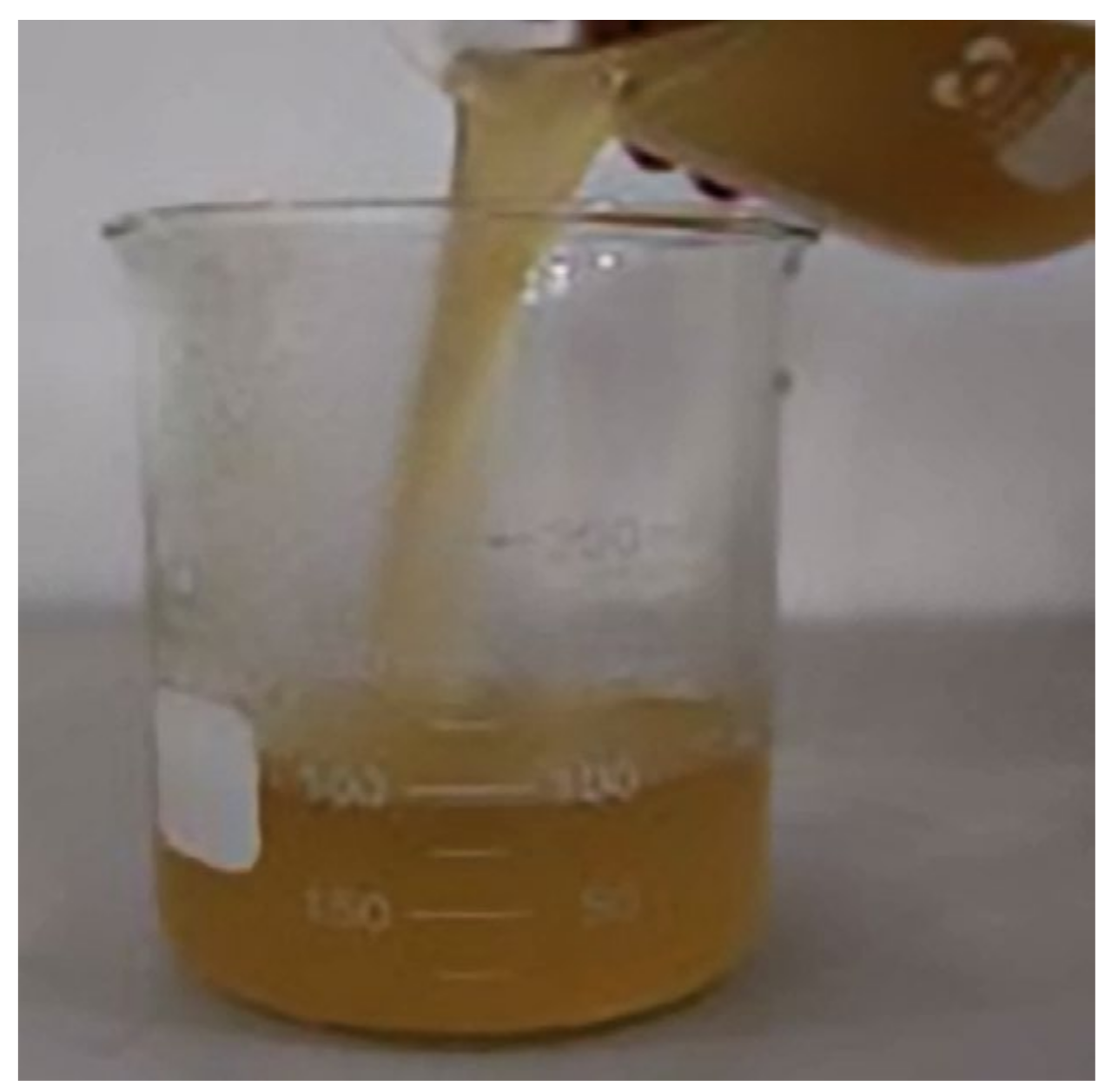
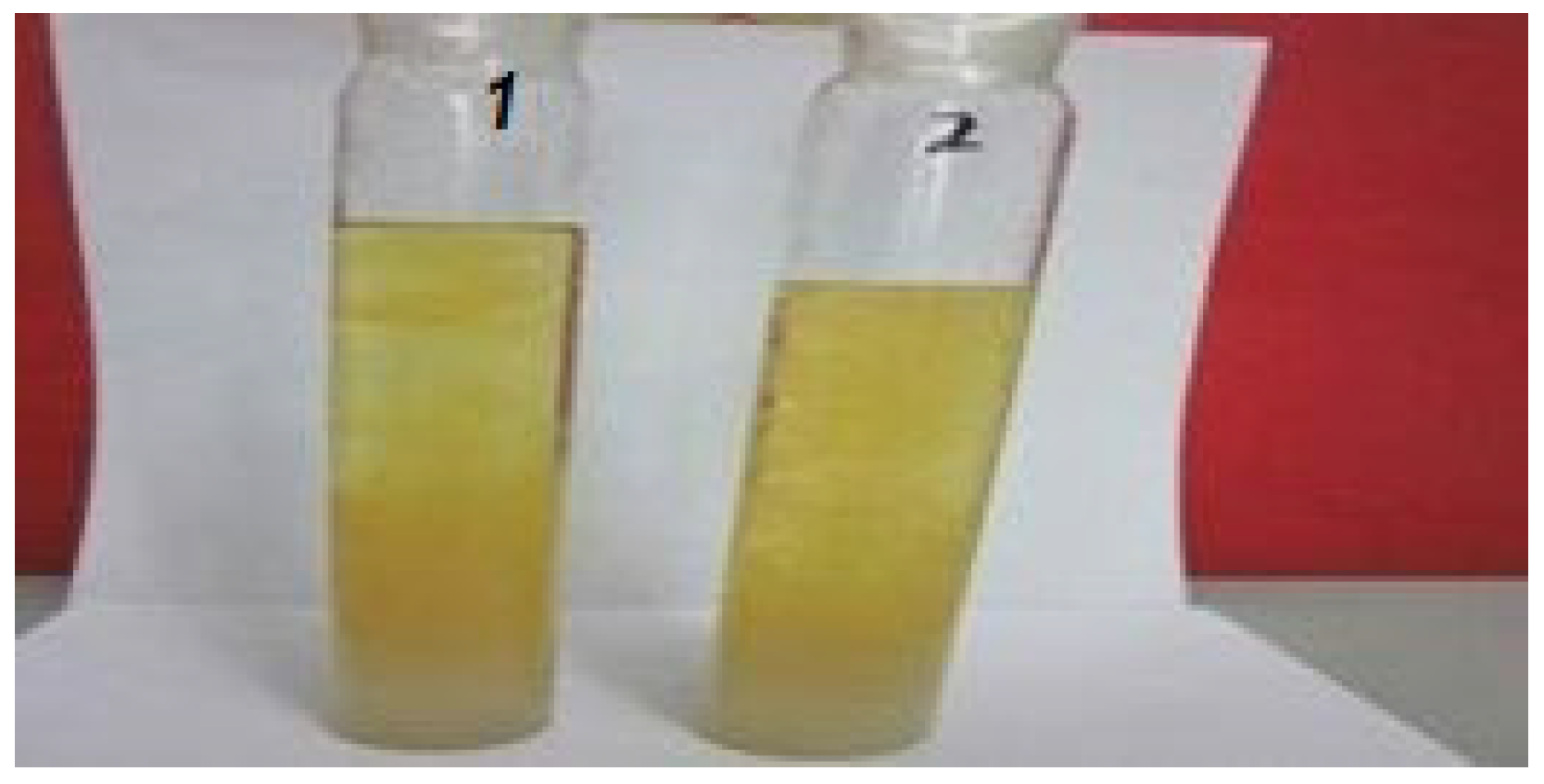

| Density | 1.21 g/cm3 |
|---|---|
| Funnel viscosity | 66 s |
| Yield point (YP) | 15 Pa |
| Plastic viscosity (PV) | 30 cP |
| Filtration loss | 3.6 mL/30 min |
Disclaimer/Publisher’s Note: The statements, opinions and data contained in all publications are solely those of the individual author(s) and contributor(s) and not of MDPI and/or the editor(s). MDPI and/or the editor(s) disclaim responsibility for any injury to people or property resulting from any ideas, methods, instructions or products referred to in the content. |
© 2023 by the authors. Licensee MDPI, Basel, Switzerland. This article is an open access article distributed under the terms and conditions of the Creative Commons Attribution (CC BY) license (https://creativecommons.org/licenses/by/4.0/).
Share and Cite
Liu, Z.; Xu, J.; Peng, W.; Yu, X.; Chen, J. The Evaluation and Application of SmartGel for Deepwater Loss-Circulation Control. Processes 2023, 11, 1890. https://doi.org/10.3390/pr11071890
Liu Z, Xu J, Peng W, Yu X, Chen J. The Evaluation and Application of SmartGel for Deepwater Loss-Circulation Control. Processes. 2023; 11(7):1890. https://doi.org/10.3390/pr11071890
Chicago/Turabian StyleLiu, Zhiqin, Jiafang Xu, Wei Peng, Xiaodong Yu, and Jie Chen. 2023. "The Evaluation and Application of SmartGel for Deepwater Loss-Circulation Control" Processes 11, no. 7: 1890. https://doi.org/10.3390/pr11071890





